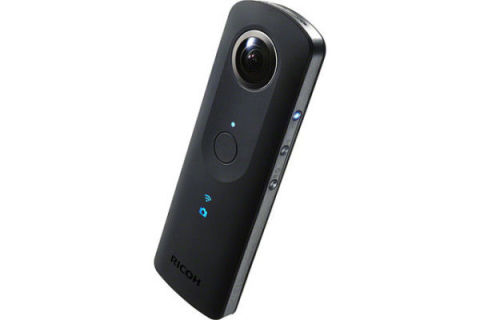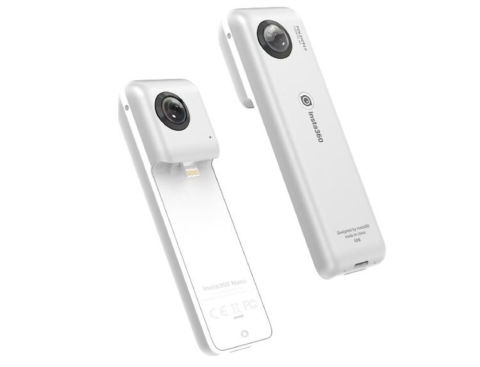A 360-degree camera isn't a must-have device for everyone. But if you've had an itch to create some VR-friendly video, or simply want to add a new gadget to your camera bag, it can be an enticing proposition. Although we're very much in the early days of VR, there is now an entire range of options from entry-level to professional
With services like Facebook and YouTube adding 360-degree photo and video support, maybe it's time you became the envy of your social media circle.
Amazon | $300
Ricoh's Theta S is one of the most well-reviewed cameras on the market, and comes equipped with a pair of 12-megapixel image sensors and f/2.0 fisheye lenses to capture full 360-degree video at 1080p. It's The Wirecutter's top choice as best overall 360-degree camera, and has high-marks from CNET, TrustedReviews and Imaging Resource, among others. At $300, it's also a relatively affordable option.
But it's nice price comes with some not-so-nice downsides, like a non-upgradeable 8GB of storage and no 4K video support.
360FLY 4K
Amazon | $480
If you're looking for something a little more high-end and versatile than the Theta S, the $500 360fly 4K could be a better fit. Its rugged and waterproof ball-shaped design means it can be withstand some punishment, and as the name suggests, it captures full 4K video, which you're going to want if you're planning to do more with your footage than just share it on social media.
Unlike the Theta S, however, the 360fly relies on a single lens that doesn't quite capture true 360-degree video; you'll get a full 360-degrees horizontally, but only 240-degrees vertically. Tom's Guide was especially pleased with its easy of use and video quality, but notes that both the battery and storage are non-replaceable.
LG 360 CAM
Amazon | $120
You won't find a really cheap 360-degree camera without some significant trade-offs, but the LG 360 Cam at just $120 manages to stack up pretty well against pricier cams in terms of specs. It packs a pair of 14-megapixel sensors and a microSD slot for storage, though you'll have to supply your own card.
While it is mostly marketed as an accessory for LG phones, it's compatible with both iOS and other Android phones. Android Central and CNET each had some issues with the software (a common complaint with 360-degree cameras), among other caveats, but those may be worth swallowing considering the low price.
Amazon | $255
Unlike the LG's camera, Samsung's Gear 360 is designed to only work with newer Samsung phones, but it's an option worth seriously considering if you happen to have one. You'll get 4K video and full 360 images from the pair of 15-megapixel cameras, which can also be used individually to simply capture wide-angle images. The Wirecutter found it delivered some of the best image quality among the sub-$600 cameras it tested.
The Gear 360 can be controlled on the device itself or through your Samsung phone as a remote, and the Gear 360 not only has removable storage but a replaceable battery as well.
INSTA360 NANO
Amazon | $200
For iPhone users (6 or newer), the Insta360 Nano is one of the more compact and truly mobile options out there. At $200, it's also one of the more affordable. One clear advantage of going this route is that you'll have a nice big viewfinder when the camera is connected to your phone (it can also be used on its own). But you'll likely want to temper your expectations for video quality, according to PC Magazine's review.
Notably, the Insta360 has its own battery, so it won't drain your phone, and if you don't already have a cardboard VR headset, you're in luck—the camera's packaging turns into one.
GOING PROFESSIONAL
Intent on going all out and creating professional-grade VR content? You'll need to forego all the previously mentioned consumer 360-degree cameras, and be prepared to pay some brand new car prices, like the $45,000 Nokia OZO. That eye-popping amount of money buys you eight synchronized 2Kx2K cameras that can capture stereoscopic video, plus an array of eight microphones to record spatial audio for a truly immersive experience. If you're still feeling pro-grade but not that pro, you might give the GoPro Omni or Panono a chance.
It's a dizzying amount of money to drop on some gear, so it's worth checking to see if some camera shops offer rentals for these pro-level pieces of equipment so you can give it a test run to know if its works for you. Hey, worst comes to worst, you can always wait a couple of years for the same specs to trickle down to something a little more affordable.





No comments:
Post a Comment